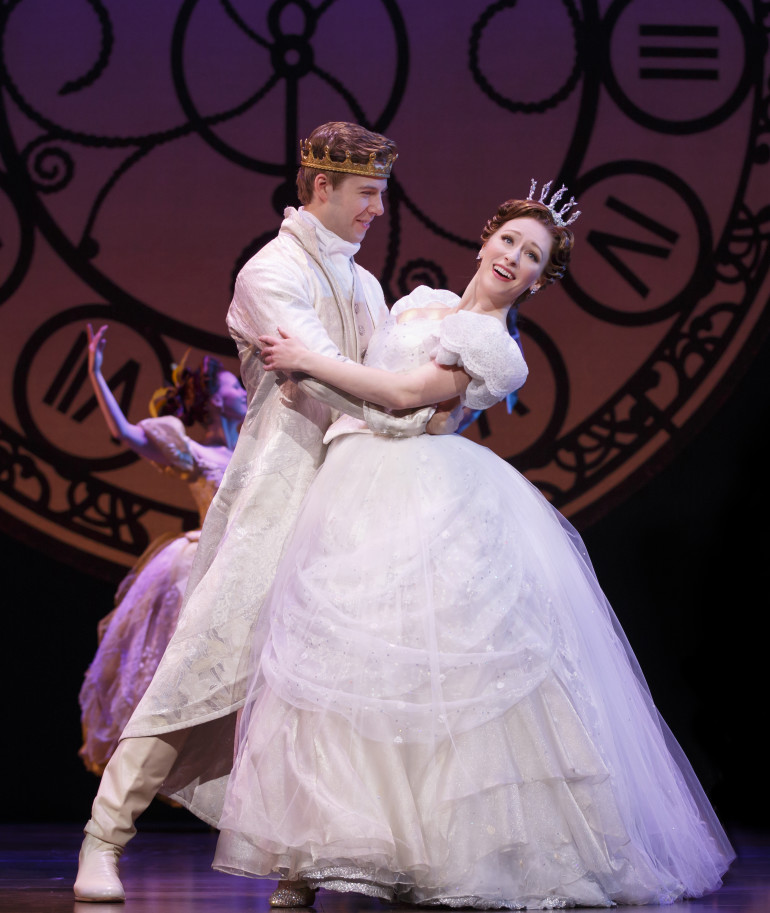‘Cinderella’ costume designer: Gotta get the shoes, the dress right
When famed Broadway costume designer William Ivey Long set out to create the costumes for the musical “Rodgers + Hammerstein’s Cinderella,” his inspiration didn’t come from a fairy godmother, but rather, a more unconventional source: Vegas magicians Siegfried and Roy.
Yes, the tiger guys. Long had previously designed costumes for their stage show, and “Cinderella” made him think of one of their sayings.
“They used to say these two phrases: ‘Magic is all around you,’ and ‘Love is all around you.’ I’ve used both of those in ‘Cinderella,’ ” Long said. “It sounds very hokey, but some basic truths do sound very hokey, and I learned it from Siegfried and Roy.”
“Cinderella” is, after all, a show that requires a lot of magic — and a lot of clothes. Long created more than 300 costumes for the touring production, but the most important are the two voluminous ball gowns worn by the show’s title character. More so than in any other fairy tale, the clothes make the woman: That “big ol’ princess dress,” as Long calls it in his Southern drawl, is the manifestation of the character’s hopes, dreams and future.

So, “when you get the phone call that says, ‘I’d like you to design “Cinderella,” the first thing you do is say, ‘OK, I’d better get the shoes right, and I’d better get the ballgown right,’ ” he said.
For the shoes, Long went to Stuart Weitzman, who created custom-made Lucite heels studded with sparkly rhinestones. And for the dress, he took his cues from 16th-century France and 19th-century Italy. Because the original story was based in Catherine De Medici’s France, Long took inspiration from court paintings of the era — with a few nods to the 1963 Italian film “The Leopard,” set in 1860s Sicily, and featuring a lavish ballroom scene. For supporting characters, his reach was even broader: Ivey, who has an art history degree, looked to the 16th-century Flemish paintings of Pieter Bruegel, medieval paintings and even the 20th-century fairy tale paintings of Maxfield Parrish.
“This is the first big old ballroom dancing scene I’ve ever done,” Long said. “I sort of put the kitchen sink in it because I loved so many images.”
The dress shines even more during the dance scenes, because Long filled out the skirt with 14 layers of thin, gauzy fabric. When it’s lit from behind, it’s like “an Irving Penn photograph of a flower,” Long said.
After all, it’s a magical dress. And, unlike in previous representations of Cinderella, the fairy godmother can’t take all the credit. Seeking a more modern version of the Rodgers and Hammerstein musical, which was originally written for television in 1957, writers updated the fictional damsel-in-distress story to be a more empowered tale. With the encouragement of her fairy godmother, Cinderella herself is responsible for the transformation of her rags into a beautiful ballgown — and she acts as the moral compass for the prince, helping him save his kingdom.
“I haven’t done deep research into the ego and id,” Long said, “but I think we carry our fairy godmother in ourselves.”
As for the stage magic involved in the quick change, Long is keeping his lips sealed. But, he says, there is “no smoke, no mirrors, no blackouts. It’s right there. Each of the transformations is done completely by Cinderella, which just supports the feeling that you make your own magic.”
It’s true whether you’re a fairy tale princess-to-be, or a Vegas magician.




